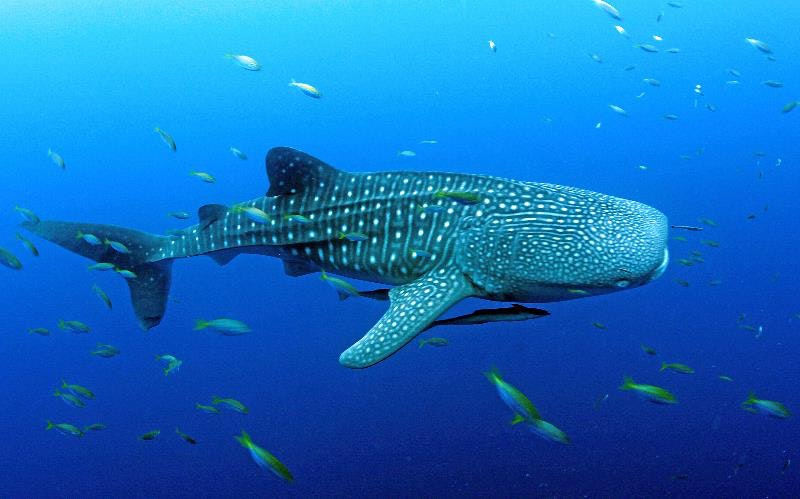
This year on World Wildlife Day, we turn our attention to life below water — and what you can do for the creatures living there. Human Nature tapped six Conservation International experts for their best tips to help marine species, whether you’re commuting to work or whale-watching on vacation.
Let’s dive in.
1. Be that person at the restaurant
“Every time you purchase seafood, ask questions. Don’t ask yourself — ask the waiter, fish monger or person at the fast food counter. What species or kind of fish is this? Is it imported? How was it caught? Just by asking these questions, you have the power to guide fisheries practices by letting seafood producers, processors and retailers know that you care about where your seafood is coming from and how it is caught.” – Matthew Ramsey, director, Conservation International Hawai’i
2. But seriously: If you’re ordering seafood, make sure it’s sustainable
“The single biggest thing that consumers can do is to only purchase sustainable seafood. That means seafood that is produced using environmentally sustainable methods and is socially responsible, protecting the workers involved in its production from human rights violations.” – Jack Kittinger, senior director, Conservation International Blue Production Program
3. Love to scuba dive? It’s time to multi-task
“There are more than 6 million active recreational divers worldwide. If everyone picked up just one piece of abandoned fishing gear or trash each time they went diving, it would be a monumental benefit to the global initiative to clean up the ocean. Bonus tip: Talk to your friends about the issue. By raising awareness about the problem of ghost nets, you’re multiplying the number of advocates for the health of our oceans. This is citizen empowerment at its best!” – Edgardo Ochoa, Conservation International marine safety officer
4. Ditch the single-use plastics (and invest in new technology while you’re at it)
“We need to find a replacement to plastic — I don’t see our culture going backward, so we need to support alternative solutions to plastic. Invest in companies that are developing biotechnology and alternative solutions. And, when there is the opportunity to purchase food and other products not wrapped in plastic, choose that.” – Whitney J A Yadao-Evans, program manager, Conservation International Coral Triangle Initiative
5. Watch your (carbon) emissions
“Do whatever you can to reduce your carbon footprint. Last October, the world’s leading climate scientists issued a warning that if carbon emissions are not drastically reduced by 2030, many species — including marine — will be doomed to extinction. By eating locally and sustainably produced food, carpooling in a fuel-efficient vehicle and paying for carbon offsets when you fly, you can reduce your personal carbon emissions and contribute to a safer world for oceans and marine life. If you’re already doing these things, the next step would be to encourage your local government, friends and family to reduce their carbon emissions by getting involved in community reforestation and conservation programs.” – Scott Henderson, vice president, Conservation International Americas Division Marine Program
6. Put that selfie stick to good use
“Whales are one marine species that face many threats from humans, including entanglement in fishing gear, being struck by ships, ocean noise and climate change. You can help minimize your impact on whales by conducting responsible boating practices and keeping a safe distance. If you choose to go whale watching, make sure it’s with a responsible tourism operator and a certified crew. You can also contribute to whale research by sending photos of whale tails from your trip to Happywhale.com, which uses unique tail markings to track whale migration patterns. The bonus? You can use Happywhale’s website to track where the whale that you saw in real-life is traveling!” – Olive Andrews, marine program manager, Conservation International Asia-Pacific
If you’d like to read the original source of this article please click here Visit Source
